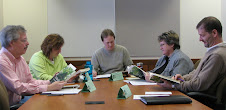The Manitowoc County Recycling Center will be holding the annual tire collection September 8 through September 20. This program allows Manitowoc County residents and businesses to properly dispose of their tires at a reduced rate. Through the years a significant amount of tires have been collected. In 2007 over 60 tons were collected and in 2006 over 67 tons were recovered.
Waste tires can be reused in a number of beneficial ways. They can be shred into rubber chips and used as artificial turf or as a groundcover in playgrounds. Tire rubber can be incorporated into asphalt roads, running tracks and used in other rubber products. Depending on what other materials are in the tire they may also be used as a fuel source.
The DNR estimates that Wisconsin produces 5 million waste tires a year. Tires have been banned from landfills since 1995 because they take up too much space and their bulky size makes them hard to keep buried. Unfortunately, tires have often been illegally dumped along roadways or in illegal stockpiles. Aside from looking like a mess this can cause environmental problems. Burning tires can release large amounts of pollutants into the air, water and soil.
Before those wear bars even begin to show you can help reduce the amount of tires being disposed of. Taking proper care of your tires can prolong the life of the tire. Following the scheduled rotation and maintaining proper air pressure can help you get more use out of them. Fixing alignment problems early can also save tire wear.
A few guidelines should be noted for this collection. When bringing in your tires please check in at the Main Office prior to dropping tires. Tires with rims will be accepted and charged at the weighed rate of 11 cents a pound or $220 a ton. Residents and businesses with large amounts of tires should call the Recycling Center prior to bringing them in. For more information you can call the Recycling Center at 920-683-4333 or visit
www.manitowocrecycles.org.







